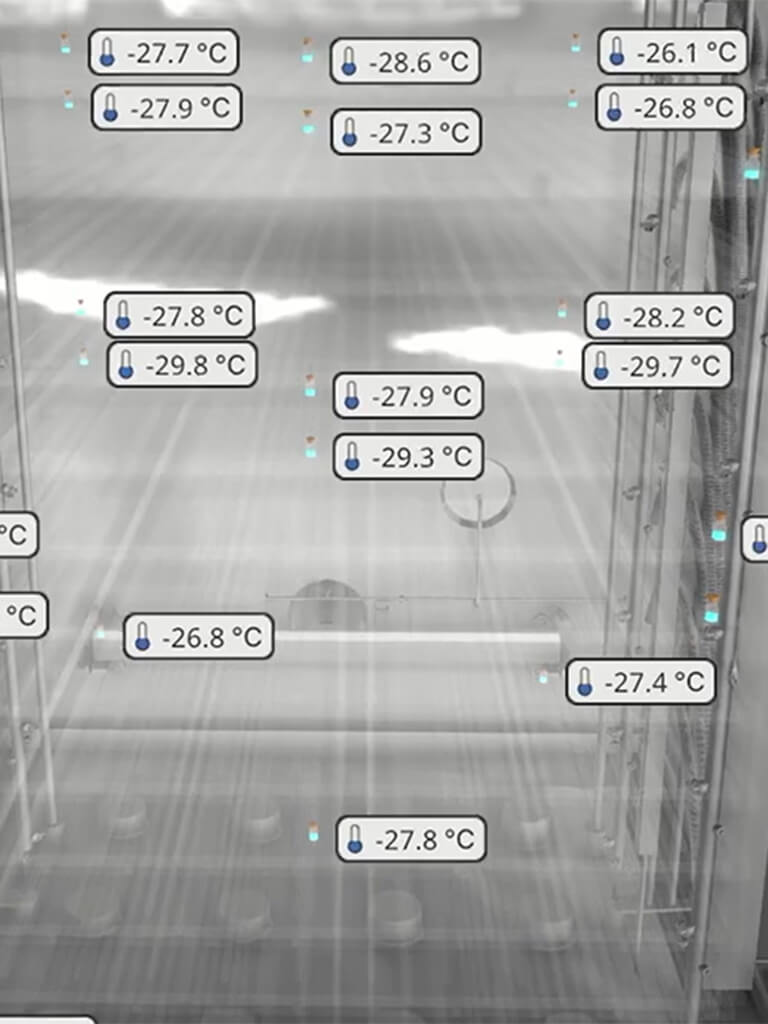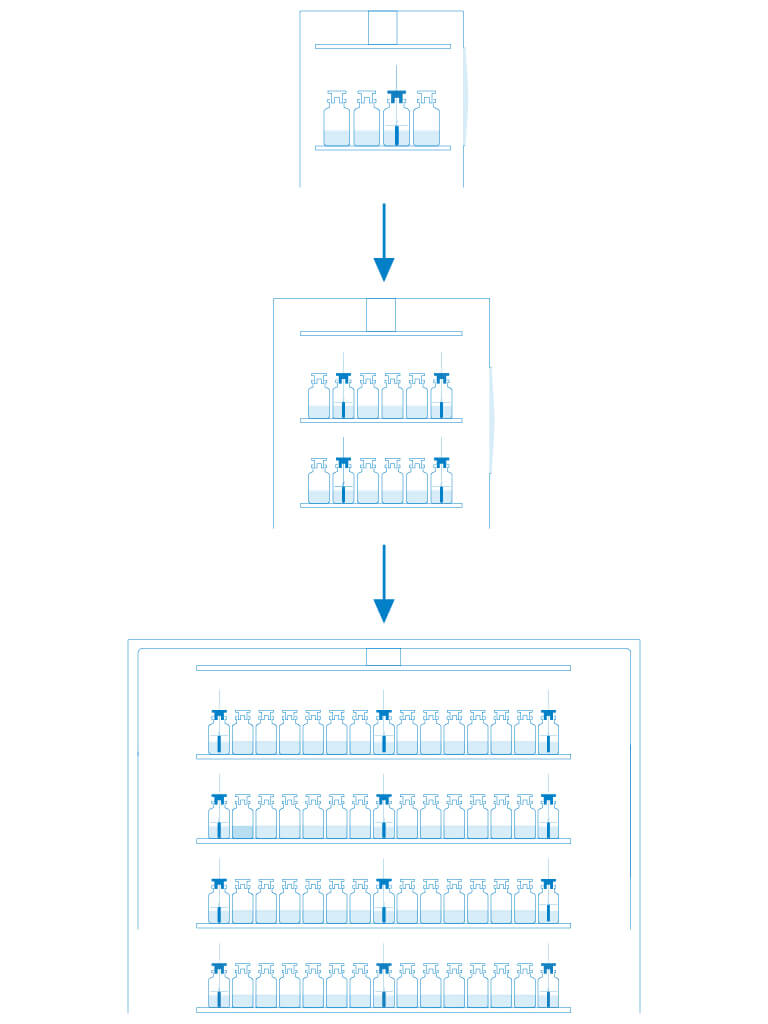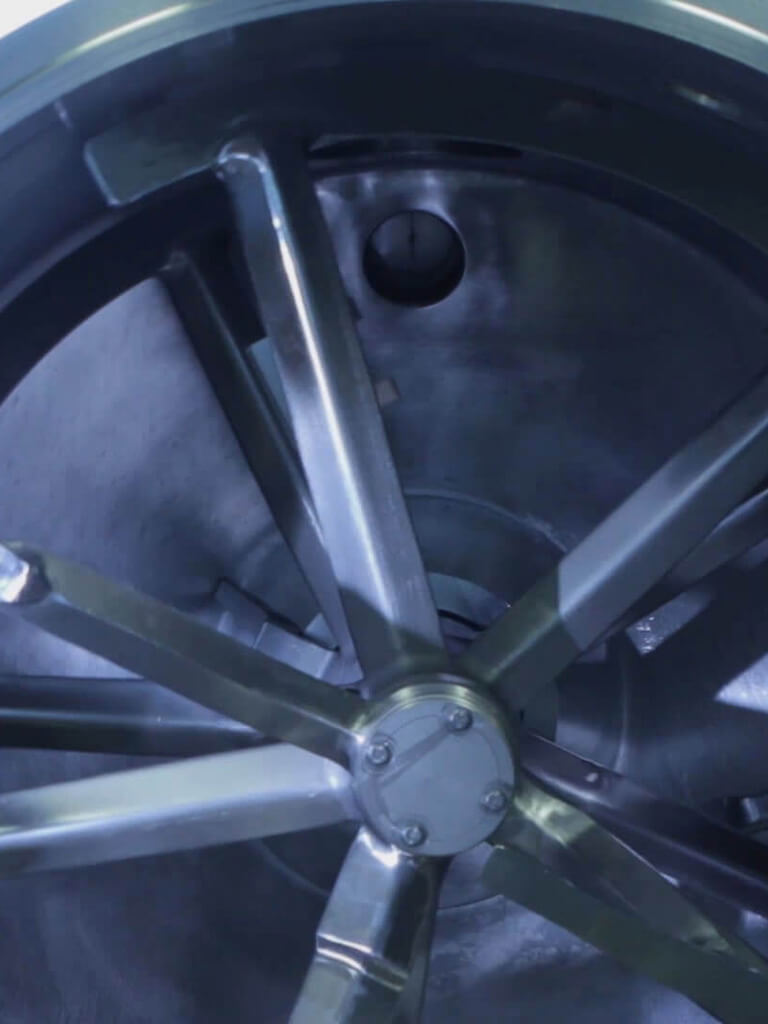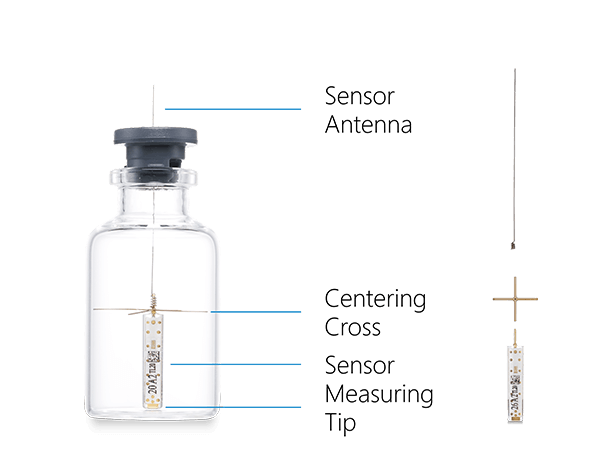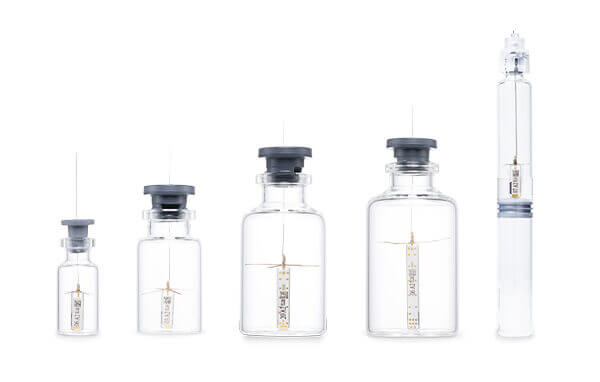Applications of the Product Temperature Monitoring System
There are many applications of the Product Temperature Monitoring System. As Tempris temperature sensors are available in different sizes and in combination with different accessories, they can be used in various applications. Whether it is freeze-drying of biopharmaceutical formulations, powder granulation, or mRNA vaccines, with the wireless and battery-free Tempris sensors, it is possible to monitor the product temperature in real-time. You can also use Tempris to detect critical hot and cold spots, collect seamless temperature data through the entire development process for regulatory purposes, and optimize your processes.
Possible applications for the Product Temperature Monitoring System are
Real-time Product Temperature Monitoring
In a freeze-drying process, the product temperature is the most important critical quality attribute. A combination of process and product parameters, such as shelf temperature, chamber pressure, product resistance, container geometry, radiative heat transfer, and the physicochemical state of the product, determines it. Tempris sensors are wireless and battery-free, designed to monitor the product temperature. They provide real-time data on product temperature on all scales of freeze dryers, even in combination with automatic loading systems. This helps to overcome the challenge of keeping all product units within the batch at a target product temperature throughout the process.
Hot and cold spot monitoring
Tempris technology is a valuable option for reliable and rapid determination of Hot and Cold Spots (HCS) within a freeze-dryer. It can be applied for all scales and sizes of equipment and offers the possibility of qualifying local differences within the batch comfortably. This data can even be obtained in production freeze-dryers with automatic loading systems under load conditions, offering unique information most representative of subsequent production runs. Tempris sensors provide real-time data on product temperature, helping to overcome the challenge of keeping all product units within the batch at a target product temperature throughout the process.
Lyophilization Cycle Optimization
The optimization of lyophilization cycles is a complex and iterative process. It is important to consider critical product quality and equipment limitations. Real-time monitoring with the Tempris system across various freeze-dryer scales is a valuable tool for optimization. The freezing step is crucial for ensuring complete solidification and crystallization, with Tempris technology providing insights. Primary drying must keep the product temperature below a critical formulation temperature to avoid structural damage. Tempris sensors help maintain the appropriate temperature. In secondary drying, the goal is to achieve uniform moisture content, and Tempris technology facilitates real-time temperature measurement for optimization.
Lyophilization Cycle Scale-up and Transfer
Transfer and Scale-Up of lyophilization processes require reproduction of the initial product temperature profile onto the target freeze dryer. By application of the Tempris system, the product temperature differences arising during the transfer can be quantified and compensated by process adaptation, and the characterization of equipment effects can be improved. The same Tempris Sensors can be used in all lyo scales, and thus, the system provides comparable product temperature data from laboratory to production.
Tempris Data for Regulatory Submission
The data obtained with the Tempris system can form an integral part of the regulatory strategy for submission. Tempris data is 21 CFR Part 11 compliant and can be used to compare product temperature data throughout development. Process analytical technology (PAT) methods, such as Tempris, are essential for defining a Design Space and monitoring critical product and process attributes. Tempris is applicable to all sizes of freeze dryers and provides consistent product temperature data suitable for regulatory submissions.
Product Temperature Measurement in Biopharmaceutical Products
Measuring the product temperature during the freeze-drying of biopharmaceutical products is crucial for ensuring the quality and stability of the final product. The product temperature must be carefully controlled during the process of lyophilization to prevent damage to the product and ensure that the final product meets the desired quality standards. Accurate measurement of the product temperature allows for precise control of the freeze-drying process and helps to ensure that the final product is of high quality.
Temperature Control during Freeze Drying of Probiotics
Maintaining the temperature of probiotic products during the freeze-drying process is crucial to preserving their quality and effectiveness. Damage to the probiotics can be prevented, and their viability is ensured by carefully controlling the product temperature throughout the freeze-drying process. Accurate measurement of the product temperature allows for precise control of the freeze-drying process and results in a high-quality final product with many viable probiotics. The effectiveness of probiotic products is essential in ensuring their benefits for consumers, making it necessary to maintain their quality through careful temperature control during freeze-drying.
Lyophilization of Peptides
Monitoring the product temperature during the freeze-drying of peptides is made easy with the use of Tempris sensors. These sensors are designed to accurately measure the temperature of the product throughout the freeze-drying process, providing real-time data that can be used to control the process precisely. The sensors are easy to install and use and provide reliable and consistent measurements. This allows for greater control over the freeze-drying process of Peptides, ensuring that the final product meets the desired quality standards. Overall, using Tempris sensors simplifies the measurement of product temperature during the freeze-drying of peptides.
Advantages of Temperature Measurement in RNA Freeze Drying
Accurately measuring the product temperature during the freeze-drying of RNA has several advantages. It allows for precise control of the process, which can help to prevent damage to the RNA and ensure that the final product meets the desired quality standards. This can result in improved shelf life, stability, and effectiveness of the RNA product. Additionally, accurate measurement of the product temperature can provide valuable information for process optimization and troubleshooting, helping to improve the efficiency and consistency of the freeze-drying process.
Product Temperature Measurement during Granulation
Tempris also offers a solution for measuring the product temperature during granulation, which can provide several benefits. The Tempris system uses wireless sensors to accurately measure the temperature of the product in real-time, providing valuable data that can be used to control the granulation process precisely. The Tempris system is easy to install and use and provides reliable and consistent measurements. The sensor is mounted on the rotor blades and runs permanently through the product. Using Tempris sensors for measuring product temperature during granulation can provide valuable insights and improve process control.

